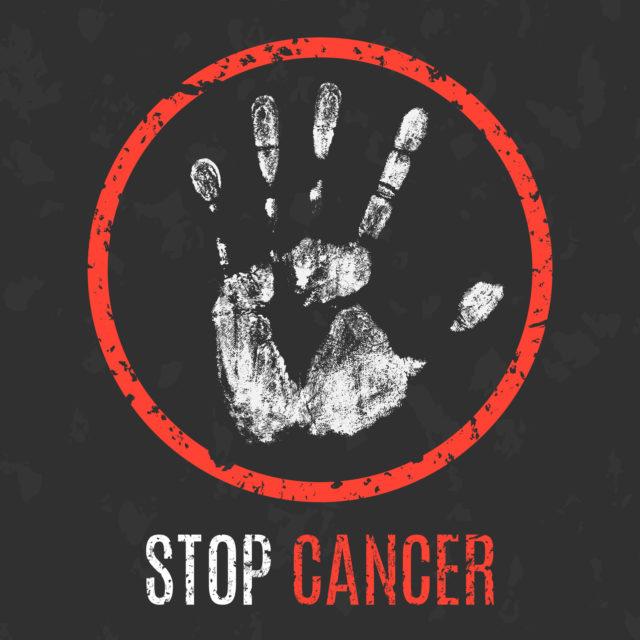
I’ve been a big fan of the Cancer Moonshot since President Biden first championed the initiative when he was serving as Vice President under President Obama. I previously shared my personal experience talking with him about it when I serendipitously bumped into him on the Acela train, and he was gracious enough to have a conversation with me about the future of cancer care and research.
Last month, President Biden announced the reigniting of the Cancer Moonshot. The reinvigorated effort shares goals of the original initiative in that it offers significant government funding with an aim to accelerate progress in our battle with cancer. While the Cancer Moonshot originally focused on speeding up discovery, fostering greater collaboration and improving data sharing, this reignition builds upon the progress made since Cancer Moonshot was first launched in 2016 and quantifies a goal: reducing cancer death by half over the next 25 years.
The impact of the pandemic on cancer care
In 2022, the world is significantly different than it was just six years ago when the initiative launched. Two years into a global pandemic, our “normal” ways of life have been upended. The ground has shifted under our feet, often suddenly and without warning, as we experienced each new wave of the virus as it mutated and traveled the globe. With each wave, hospitals and healthcare staff were redirected from their usual work, moving into an “all-hands-on-deck” environment to meet urgent Covid needs. Non-urgent care was put on the backburner to free staff for the incredible, pressing needs of the moment. These decisions were difficult and necessary as we collectively navigated this unprecedented health crisis.
However, the deferral of non-critical care wasn’t without impact. The University of Cincinnati Cancer Center noted that in March 2020 alone, more than 800 lung cancer screening appointments were postponed due to Covid. When cancer screening resumed as normal, the percent of people with lung nodules suspicious for cancer had increased from 8% before the pandemic to 29%.
Other impacts caused by the diversion of resources included the delay of clinical trials. In some cases, trial sites were essentially shut down for enrollment due to lack of staffing. Even if the principal investigators remained available, it often happened that sites couldn’t staff clinical trial coordinators, schedulers and receptionists. Sometimes those support staff were pulled into other areas; sometimes they themselves were sick or isolating. Trial delays impact not only how soon patients can benefit from a potential new treatment, but the viability of the clinical trial overall.
Many healthcare companies also felt the pandemic effect through supply chain issues. While our company didn’t experience supply issues directly, like others, we were impacted by logistics. Our clinical trials required transporting refrigerated drug product from our manufacturing site in Germany to the U.S. at the same time there was a global need to move vast quantities of refrigerated Covid vaccine expeditiously through those same channels. We experienced drug delivery pressures we hadn’t faced before and found ourselves scrambling to adjust to the situation.
The silver lining of the pandemic
These are but a few of the pandemic-related adjustments that were made just in the field of healthcare. While some of the impacts were short-term, the unexpectedness of the situation caused us all to take a fresh look at how things are done. The silver lining from the Covid experience is the degree of scientific understanding gained by the general population over the course of the pandemic.
Two years ago, one would be hard-pressed to overhear a conversation featuring terms such as antigen, spike protein or PCR testing, now regular conversation points. For example, PCR testing, which requires advanced, cutting-edge technology that sequences genetic code, is now routinely offered at mobile testing units in parks, at community drugstores and clinics, and the public is familiar with it as a superior testing technology.
Another silver lining is the greater respect the average American has for the interplay between science and healthcare and the importance of cutting edge medical research. A majority of Americans have benefitted from the extraordinary emergence of mRNA vaccines in a timeframe that would have seemed impossible just a few years ago. Deployed on a mass scale with reportable results, their promise was proven. mRNA vaccines and their success in mitigating the human toll of the pandemic opened an entirely new arena for drug and vaccine development. And this will lead to a focus on developing cancer vaccines or mRNA agents targeted to specific cancer tumors.
Cancer detection will similarly see more such breakthroughs as companies develop sophisticated analytical methods to identify circulating cancerous DNA from a simple blood sample. Cancer care will become more personalized and scientific data will inform healthcare decisions.
Into this environment, I believe the timing for the reignition of the Cancer Moonshot couldn’t be better.
The value of government-funded initiatives
Government-funded initiatives such as the Cancer Moonshot, which originally infused $1.8 billion in funding over seven years, support not only the primary science that often serves as a foundation for medical advances, but also ensure that patients with rare cancers are not overlooked.
By virtue of the way our healthcare system works, the development of new treatments always requires some sort of risk-reward calculation. Government funding helps level the playing field for patients with rare cancers by sharing some of the investment.
For example, the National Cancer Institute, which receives Cancer Moonshot funding, is able to sponsor trials for smaller companies like ours in hopes of making treatment available to patients who have none. With the resources of the NCI, trials can be completed far more quickly. This support can pave the way for commercializing a cancer drug for certain rare disease patients, for example. In my company’s own experience, trials that would have taken us more than five years will now be completed in less than half the time, thanks to the NCI and Cancer Moonshot Initiative.
Furthermore, as part of the data-sharing component of the Cancer Moonshot, the insights gained during the administration of an NCI trial are made publicly available. These insights can add to the scientific body of knowledge for a rare disease and spur further cancer advances that benefit all Americans. Taken together, it is fair to say the Cancer Moonshot has improved the prognosis for many cancer patients.
A cancer cabinet powerhouse
Part of the Cancer Moonshot reignition effort calls for a Cancer Cabinet which would bring together departments and agencies across government. I fully support this Cabinet because I believe it is critical that legislators have access to the most informed, leading thinkers in oncology today.
Ideally, this Cabinet would include academic, drug development and big pharma luminaries representing those segments of healthcare where primary research, drug development and commercialization intersect. As a Cancer Cabinet, these healthcare leaders would create guidelines for deployment of reinvigorated Cancer Moonshot funding along with metrics and deliverables to ensure transparency and a means to demonstrate the impact of funding investigational, therapeutic and preventive measures to deal with cancer.
As the final funds from the original Cancer Moonshot are appropriated this year, it’s hard to argue against this critical reignition. Renewed financial resources and leadership will be key catalysts to achieve the kind of cancer death rate reductions we are seeking, and the kind of reductions Americans deserve in light of all that we have achieved in recent years, medically, scientifically and technologically. As a result of Covid, there is a popular understanding of what science can offer and how quickly results can be achieved.
Nonpartisan path to curing cancer
Continuing to fund the Cancer Moonshot is not a partisan issue. However, it does require legislative action to come to fruition. I urge you, regardless of whether or not you align politically with the President, to contact your legislator and encourage their support and timely passing of this initiative.
Cancer has touched the lives of nearly every American, whether through an individual diagnosis or that of a close friend or family member. It’s a major scourge that has caused incredible pain and suffering. The need for progress against cancer is one felt by almost everyone at a time when we are acutely aware of the value of scientific advances.
Let’s build on what Richard Nixon began in 1971 with his War on Cancer, which birthed the National Cancer Institute, highly respected for cutting-edge research devoted to rare and orphan diseases. Let’s build on a quarter century of bipartisan support and public health progress that has reduced the age-adjusted cancer death rate by 25%. Let’s lay the groundwork through continued support of the Cancer Moonshot so that we might reduce cancer death rates by half over the next 25 years and ultimately end cancer as we know it.
Photo: Main sail, Getty Images








